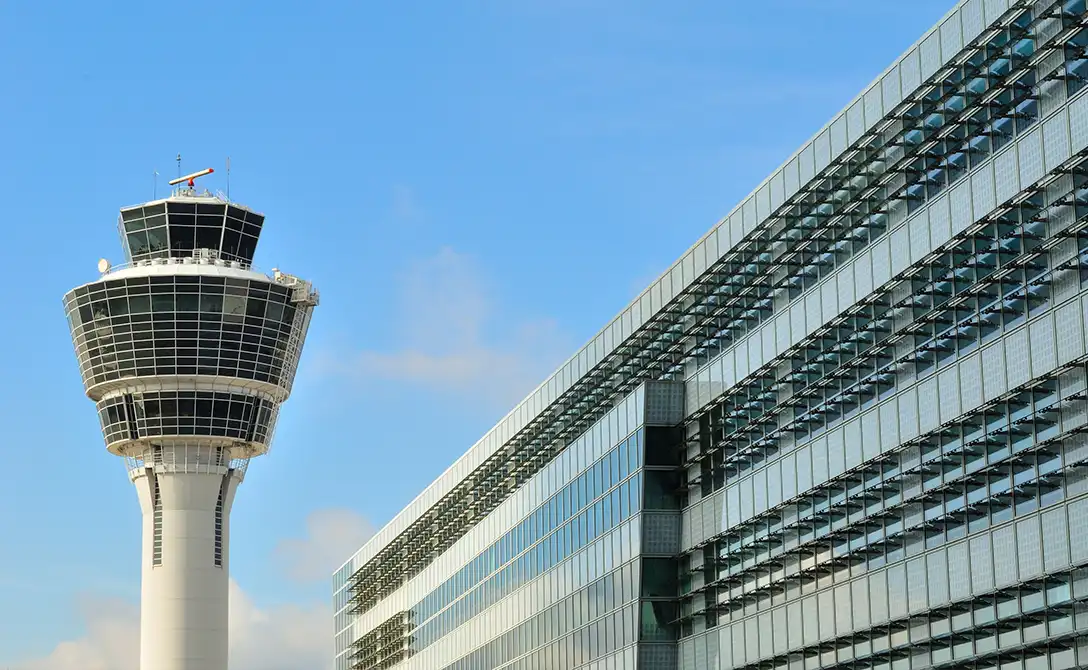
The global market in 2026 is faster, more digital, and more competitive than ever. Customers carry the baton, and demand signals keep flowing into the enterprise from more and more different channels. The current supply chain challenges require innovative capabilities and strategies to deal with uncertainties, improve supply chain resilience, and implement holistic solutions to balance costs, services, deliveries, and customer expectations.
Why Traditional Supply Chain Models No Longer Work
Legacy supply chain models were built for a slower, more predictable world, where supply and demand cycles were longer, customer expectations were more forgiving, and the number of touchpoints in the supply chain was limited. McKinsey research indicates that companies can lose up to 42% of a year’s EBITDA due to a single major supply chain disruption, particularly those lacking robust resilience strategies. Source. That’s because traditional, siloed models often relied heavily on static data and delayed communication between functions like procurement, warehousing, logistics, and customer service. Traditional models, with their limited visibility and poor responsiveness, leave businesses exposed to disruptions, delays, and customer dissatisfaction. Without integrated systems and predictive capabilities, companies struggle to adapt in time, resulting in missed opportunities and operational inefficiencies. This is where the modern Digital Supply Chain Control Tower Application steps in: offering the speed, intelligence, and visibility that traditional models simply cannot provide.
What are Supply Chain Control Towers
A supply chain control tower is a centralized, cloud-enabled platform that provides real-time, end-to-end visibility by integrating data from systems like ERP, WMS, TMS, and IoT devices. By leveraging AI, analytics, and automation, a control tower helps businesses improve efficiency, reduce costs, enhance collaboration, and strengthen overall supply chain resilience.
What Are the Supply Chain Challenges Facing Modern Enterprises?
Supply chain leaders need to manage a highly complex supply chain for the global business environment and deal with disruptions to keep the bottom line and top line intact. However, for decades, poor supply chain visibility has suffocated the industry. Here are the four challenges gripping the modern supply chain.
1. Data and Application Silos
Vertical organizations often fly blind. Yes, that is true. Most companies are vertically integrated and use systems such as ERP, TMS, WMS, and MRP to manage their functional departments. The functions primarily rely on plans developed within such systems to drive execution, monitoring & control. As a result, critical information such as customer demand, logistics, function-specific supply challenges & backlogs is siloed and invisible to other departments. While function-specific analysis is time-consuming, cross-functional insights are even more challenging and require sifting through large volumes of data. Thus, business unit heads lose sight of the strategic ambitions of the overall supply chain control tower metrics. According to a survey by Supply Chain Dive, only 6% of companies believe that they have achieved complete supply chain visibility control tower. The lack of supply chain visibility is overwhelming and keeps staggering.
2. Lack of Tools and Technologies to Generate Insights
With the advent of digital data, volume, accessibility, and insights generation through analytics are critical to creating a sustainable supply chain. However, because analytics is not widely adopted, the data is poorly used. The data engineering and analytics capabilities in most supply chains are insufficient. As a result, supply chain leaders often cannot effectively use relevant data at the required speed. They also lack diagnostic and advanced technologies and often fail to understand the nature of use cases or supply chain control tower logistics model problems.
3. Lack of Predictive and Prescriptive Capabilities
Digitalization is not enough. As per the Chartered Institute of Procurement & Supply Risk Index’s report, the average annual economic loss caused by major natural disasters around the world is approximately US$211 billion. Supply chain leaders also need to leverage new capabilities to predict market moods, deviations, and an unanticipated geopolitical landscape. However, most existing advanced analytics applications cater to solving point problems. There is an acute shortage of capabilities to use prescriptive or simulative simulations or what-if analysis to investigate broader issues in the supply chain and make recommendations. In addition, there are only a few good AI/ML-driven analytics solutions out there that prevent executives from using machine learning and limit the automation of the supply chain management control tower.
4. Lack of Off-the-Shelf Solutions
Every use case or nature of the problem varies from customer to customer. So off-the-shelf products cannot meet customization and personalization requirements. Regarding the KPIs that businesses want to measure, use cases vary from company to company, making it impossible for off-the-shelf applications to handle. Such rigid solutions put the burden on supply chain leaders to get data in the desired format. Indulgent customizations, choice complexities often lead to value destruction.
Need for an End-to-End Supply Chain Digital Control Tower Logistics
“Gartner reports, 79% of supply chain leaders believe that the internet/platform-based approach is the most critical new business model.” Source. The above four challenges states the importance of building a digital supply chain control tower supply chain with data engineering functions and pipelines on top of a solid data layer. Establishing a simplified data architecture with an automated framework can integrate master data and transactional data sources in a streamlined manner, ensuring the availability of necessary data across multiple silos to obtain accurate real-time visualization of the overall supply chain health. AI/ML-driven analytics and rapid scenario planning can provide speed, consistency, and flexibility to achieve controllable and manageable supply chain functions, thereby helping executives gain a competitive advantage.
Key Capabilities and Benefits of Supply Chain Control Tower
- Enhanced Agility and Responsiveness: With real-time data at their fingertips, leaders can make faster, more informed decisions to mitigate risks and address disruptions.
- Improved Forecast Accuracy: Machine learning and advanced scenario modeling help predict demand and supply trends more accurately, reducing stockouts and overstocking.
- Cost Optimization: By uncovering inefficiencies and automating workflows, the supply chain control tower system reduces operational costs across transportation, inventory, and logistics.
- Greater Collaboration: Control tower supply chain management applications break down data silos, enabling better coordination between departments, vendors, and third-party providers.
- Stronger Customer Experience: Meeting delivery timelines and maintaining service levels becomes easier with a centralized, insights-driven approach.
- Scalability for Growth: Supply chain planning control towers are built to adapt and scale, allowing businesses to grow without compromising visibility or control.
Two Critical Elements for an Ideal Supply Chain Control Tower Platform
An ideal Supply Chain Control Tower (SCCT) is a cross-departmental, system-integrated “information hub” that provides end-to-end visibility. There are two key elements to build/implement an ideal SCCT.
1. Real-time Visualization Catering to Different Personas
Executive Insights: An ideal supply chain control tower will provide a bird's-eye view of the overall supply chain health, supported by standardized supply chain control tower metrics that help leaders monitor performance and spot risks early. It will enable the leaders to collect and distribute information, identify risks, and respond strategically.
Execution Insights: SCCT’s state-of-the-art setup caters to the nuanced aspects of the supply chain health for multiple execution persona – analysts or managers at the DC level or fulfillment center to view the various KPIs. It provides them with information to monitor, measure, and manage different aspects of the supply chain, including transportation, inventory movement, and operational activities.
2. Use Case Approach for Autonomous Supply Chain
A successful supply chain control tower example provides global companies with enhanced visibility and centralized oversight, enabling them to streamline operations and respond more effectively to disruptions. The ideal supply chain control tower can guide leaders/managers to explore potential use cases and supply chain issues. It will allow them to find the most critical challenges that profoundly impact the overall performance of the supply chain and use advanced analytics, such as machine learning operations, advanced forecasting, or advanced scenario planning. In this way, they can combine use cases with visualization and diagnostic capabilities and automate the supply chain as they mature.
Final Thoughts
A supply chain control tower serves as a centralized hub that enhances visibility and collaboration, ultimately leading to a more efficient supply chain by allowing businesses to respond swiftly to changes in demand and supply dynamics. A supply chain control tower leverages artificial intelligence to enhance visibility and decision-making, enabling business partners to proactively manage logistics and respond to disruptions in real time. The Supply Chain Control Tower platform provides complete visibility from high-level monitoring layers to execution details, so the executives can optimize, manage, plan, and execute supply chain processes and operations faster and more accurately. The addition of anomaly detection, automated root cause analysis, and response capabilities will further simplify the transition towards a cognitive supply chain control tower.
FAQs
1. What is a supply chain control tower and why does it matter?
A supply chain control tower is a centralized hub that provides real-time visibility and oversight of an organization’s supply chain operations. It matters because it enables proactive monitoring, faster decision-making, and quick response to disruptions, helping businesses optimize performance, reduce risks, and improve overall efficiency.
2. What is a control tower in supply chain management?
A control tower in supply chain management is like having a bird's-eye view of your entire supply chain operations. It's a centralized hub that collects, analyzes, and shares real-time data from various sources to provide visibility and insights into the supply chain processes. With a control tower, businesses can monitor inventory levels, track shipments, manage logistics, and respond swiftly to disruptions or changes in demand. This proactive approach helps improve decision-making, optimize operations, enhance collaboration among stakeholders, and ultimately drive efficiency across the supply chain. Think of it as your command center for making sure everything runs
smoothly!
3. What is the purpose of a control tower?
A control tower serves as a centralized point for managing and overseeing operations, particularly in logistics, supply chain management, or air traffic control. Its main purposes include: Coordination, Visibility, Optimization, and Risk Management. Overall, a control tower enhances operational efficiency by providing oversight and facilitating communication among various stakeholders.
4. What are the three essential control tower capabilities of a supply chain?
A control tower provides real-time visibility across the entire company's supply chain, allowing stakeholders to monitor inventory levels, order statuses, and potential disruptions. This transparency helps in making informed decisions quickly. It fosters collaboration among different entities within the supply chain, including suppliers, manufacturers, and distributors. By sharing data and insights, teams can work together more effectively to address issues and optimize processes. A control tower leverages advanced analytics to provide actionable insights into supply chain performance. This capability enables businesses to predict trends, identify inefficiencies, and implement improvements proactively for better decision-making. Together, these capabilities enhance the efficiency and responsiveness of the supply chain.

AUTHOR - FOLLOW
Hemanth Holla
Senior Manager – Supply Chain
Topic Tags




